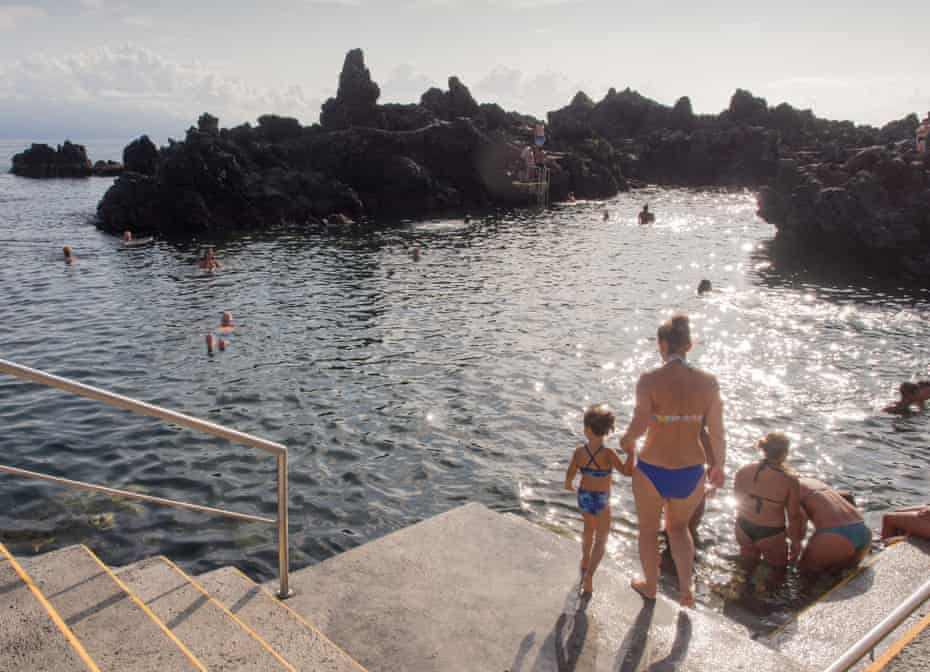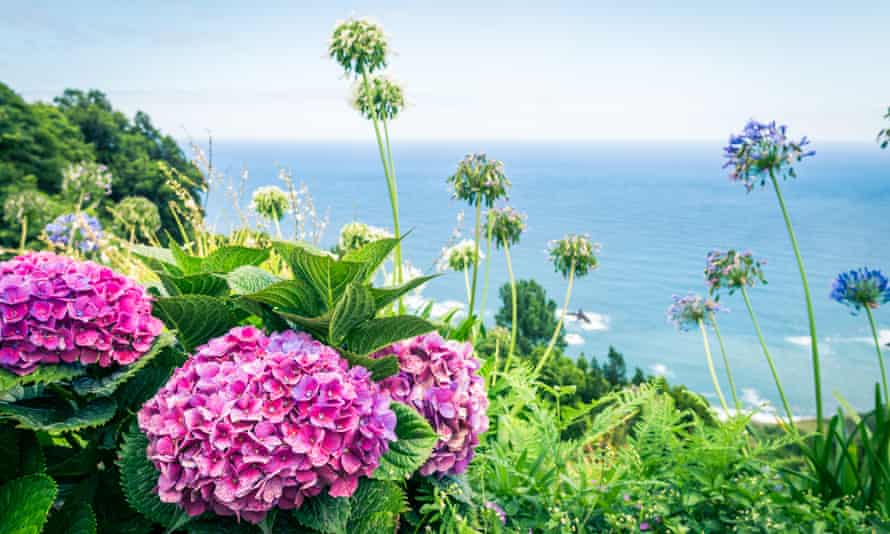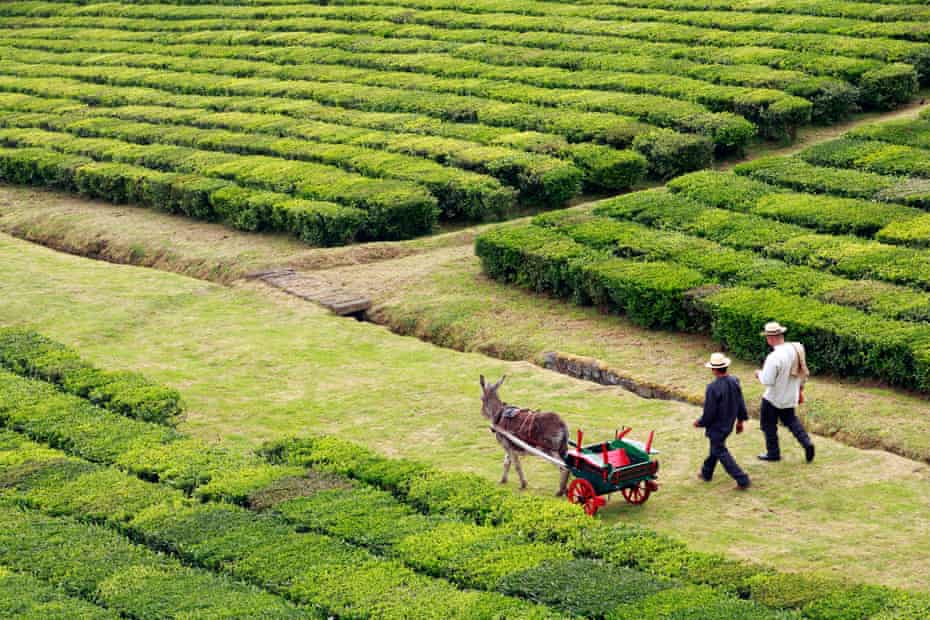The Azores archipelago (Açores in Portuguese) lies about 1,000 miles west of mainland Europe and is made up of nine volcanic islands: São Miguel (the largest), São Jorge, Terceira, Pico, Faial, Ilha das Flores, Santa Maria, Graciosa and Corvo, which you can cross by ferry or plane.
Colonised by the Portuguese in 1432, the Azores is now an autonomous region. During the period known as the Discoveries, Portugal had the largest high-seas fleet in the world, with many of its ships stopping to replenish stocks in the Azores as they travelled back and forth to Brazil, India, Japan and elsewhere, bringing with them spices that changed Azorean cuisine from simple. plain dishes to ones spiced and flavoured with new-world produce, such as tomatoes, sweet potatoes and yams.
The weather can vary even across a day, with locals (about 245,000 residents) often calling each other to find out where on an island the sun is. Lots of rain makes for a lush landscape with many waterfalls and hot springs. Tea and coffee are grown here, as well as pineapples. The town of Angra do Heroísmo on Terceira and the landscape of Pico’s vineyard culture are Unesco world heritage-listed sites.
Wine
What the Azores produces is astonishing: not just for its quality but because the vines are grown in seemingly inhospitable cracks in rocks and hardened lava, buffeted by winds and storms. These conditions provide distinctive salty notes. The most famous Azorean wines are from Pico, an island dominated by Mount Pico. Try them at Pico Wines, a cooperative, or at the Azores Wine Company, which recently opened an architecturally impressive winery with views across the squares of dry-stone corrais that comprise the vineyards. Pico makes the more well-known wines but Biscoitos, on Terceira, has a similar landscape and also produces great stuff.
Beaches, swimming, dolphin- and whale-watching

There are beaches across the Azores, but since these are volcanic islands the sand is dark or the shore is rocky. Swimming “pools” dot the shoreline of all the islands: sometimes ladders hang on the edge of rocks, some can be accessed directly from the shore, and others are in little harbours. In August, the sea temperature can reach 23C, but given this is the Atlantic, the water is cold for much of the year. There are also waterfalls and volcanic springs to plunge under and into. Dolphin- and whale-watching trips are widely available.
Cakes and biscuits
The islands have their own cakes and biscuits, of which my favourites are Dona Amélia, small cakes made from melkana (like molasses, brought from Brazil), sugar, eggs, cornflour, cinnamon and raisins. Created to celebrate the visit of King Don Carlos and his wife, Dona Amélia, in 1901, try them at Pastelaria O Forno in Angra do Heroísmo. Pudim conde da praia is made from potatoes, sugar, butter, lemon, eggs and cinnamon. Espécies de São Jorge are horseshoe-shaped cookies stuffed with a spiced filling that includes fennel, black pepper, cinnamon and lemon – those made by Dulçores on São Jorge are good.
Dairy
When the Portuguese discovered the Azores they shipped over livestock to the islands to see if the animals could survive. They did, especially the cows with abundant grass to graze on grazing. Butter, milk, cream and cheese produced across the Azores are likely to be some of the best you have ever tasted. Two cheeses have Protected Designation of Origin (PDO) status: tangy Queijo São Jorge (try it at Queijaria Canada on São Jorge) and buttery Queijo do Pico, but every island produces wonderful ones (O Morro on Faial is incredible). The ice-cream, yoghurt and ghee (from Azorghee) are also exceptional.
Hydrangeas

Drive, walk or cycle along the roads of the Azores and you will be greeted by banks of hydrangeas, often tall bushes full of large floral heads in shades of blue, pink, white and purple. Faial is also known as the blue island – a volcanic eruption in 1957 left behind a fertile soil full of acidity and aluminium, which makes the flowers blue. Hydrangeas are not an indigenous species – they were introduced by Portuguese settlers in the 17th century – but became invasive because of the conditions (the rain, the rich earth) and had a devastating effect on some of the local flora. They were used like walls to keep the cows to certain fields. Hydrangeas begin to bloom in late April and flower until early September.
Fajãs
Formed from lava flows that stopped at the sea, fajãs are mostly steep cliffs running down to the coast and are most concentrated on São Jorge. Being volcanic, fajãs are exceptionally fertile and were used by settlers to grow yams, maize and vegetables. These days coffee and tropical fruits are grown along the more gentle slopes. Take the spectacular walk from Fajã dos Cubres to Fajã da Caldeira de Santo Cristo, the only place on the archipelago where clams are grown (it’s also a magnet for body boarders and surfers). Eat the clams at Restaurante O Borges before walking back to Fajã dos Cubres.
The cult of the holy spirit

The holy spirit (or holy ghost) festivals are the primary annual event for Azoreans, 90% of whom are Catholic. The festivities have common threads but the celebrations and traditions vary from island to island. They centre around impérios (empires) – small shrines to the holy spirit – highly decorated and maintained with care. Their architecture also varies: on Terceira, where there are 73, they are topped with an imperial crown. The festivals are also social and family celebrations, with singing, processions and eating and drinking. The “cult” arrived with the first settlers, with the Azorean people becoming more devoted as communities came together to worship, isolated from the mainland.
Seafood and fish
The Azores has fabulous tuna. Much of it is exported as well as canned, but eating it fresh on the islands is a must. Other species include blue jack mackerel, chub mackerel, forkbeard, red porgy and swordfish, while lobsters, slipper lobsters, crabs and spider crabs are abundant. But there are two types of seafood that are particular to the Azores. The first, more widely available, are lapas, limpets which are usually grilled (try them at Sabores Sopranos on São Jorge, which often has lapa branco, which is more orange, and lapa mansa more black). The other is cracas, barnacles that look like rocks, but have small holes inside that are home to sweet, almost lobster-like meat, which has to be picked out. Cracas are more easily found on Terceira – try them at Beira Mar de São Mateus.
Tea and coffee

Tea is grown on two plantations on São Miguel – Gorreana and Porto Formoso, both on the north coast, producing black (primarily orange pekoe, pekoe, moinha, oolong and broken leaf) and green tea. You can visit the plantations and factories to learn about their teas. Tea is thought to have been introduced to the islands at the beginning of the 19th century, when it was realised that the climate was good for its cultivation. High-quality, fruity coffee is grown on fajã slopes on São Jorge – sample that produced by the Nunes family at Café Nunes at Fajã dos Vimes.
A geopark
Nine islands, one geopark. There are 121 geosites across the archipelago’s land and the sea bed. There are dry caldeiras, lakes in craters, fumarolic fields, hot springs, caves, grottoes and crevices, many of which are the result of the volcanic nature of the islands. The sites include Mount Pico, which you can climb to the top of. Capelinhos volcano, on the westernmost point of Faial, resulting from an eruption between 1957 and 1958, has a 2km-wide surface caldeira around the crater, which is a nature reserve. On Ilha das Flores, the walking trail at Fajã de Lopo Vaz, probably one of the first places to be settled on the islands, is also a geosite.





